The best varieties of apricots for central Russia
Apricot trees are distinguished by their attractive appearance: during flowering, the garden is decorated with large flowers, and during ripening and fruiting - appetizing golden-orange fruits. For cultivation in central Russia, cold-resistant apricot varieties with stable yields are chosen. Trees must have strong immunity and powerful shoots. Let's take a closer look at what else to look for when choosing and which varieties are considered the best for this region.
The best varieties of apricots for central Russia
Apricot is a heat-loving crop, but some varieties are frost-resistant and are suitable for growing in the regions of central Russia.
Apricot is popular among gardeners in Pskov, Tver, Oryol, Nizhny Novgorod, Saratov and other regions. Summers in these regions are warm with moderate humidity, and in winter Frosts occur, so summer residents prepare seedlings of frost-resistant and strong varieties for planting.
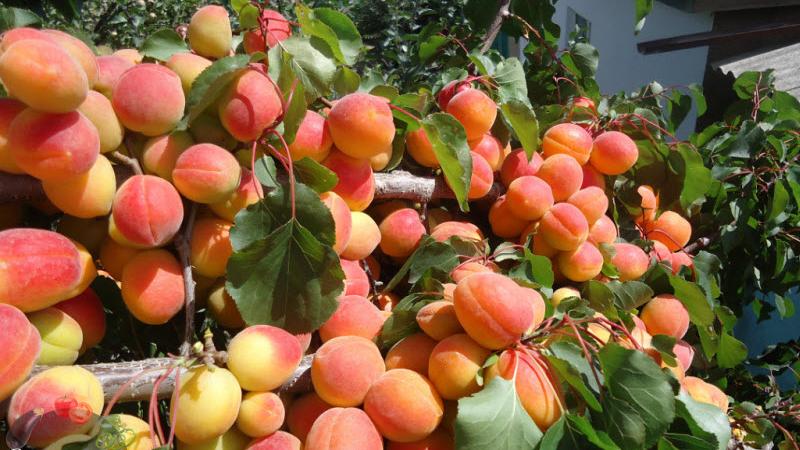
Early
Early varieties rarely get sick and are immune to insect pests. They need abundant watering and fertilizing, otherwise the fruits will not ripen on time and will be insipid and small.
Samara's firstborn
Early ripening universal variety. A medium-sized tree with a dense and spreading crown grows quickly. The shoots are long and thin, erect. Firstborn Samara requires a spacious, warm area; the distance between trees should be at least 4 m.Apricots bear fruit in the third year after landings.
The shape of the fruit is round, the peel is of medium thickness. At the base the apricot is light orange, the rest of the surface is pale yellow. The pulp is aromatic, the taste is sweet and sour, pleasant. The stone is medium, easily separated from the pulp. The harvest is suitable for processing and transportation.
Chelyabinsk early
The variety quickly adapts to the climatic conditions of the middle zone, is frost-resistant and unpretentious in care. The tree is medium-sized with a raised crown. The shoots are thick and straight, the leaves are dark green and rounded.
The fruits are spherical, weight one - about 12 g, color rich yellow. Apricot pulp is orange, dense, and has a sweet and sour taste. The harvest is harvested in July, apricot is used to make jam and compotes, jams and marmalade. The preparations turn out tasty, with a pleasant sourness.
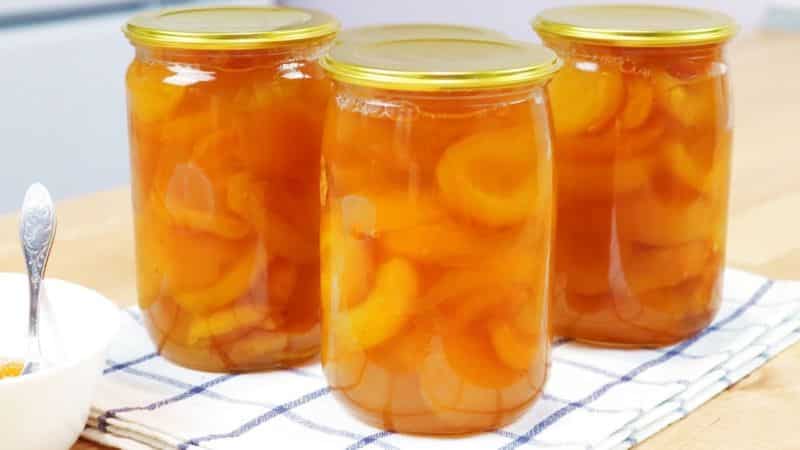
Iceberg
Ultra-early variety for universal use. The tree is fast-growing, the crown is of medium density, height - up to 3 m. The shoots are straight, dark red in color. Iceberg begins to bear fruit in the third year after planting. The weight of the fruit is 20-25 g, the color is bright yellow with a pinkish blush, the taste is delicate and juicy. Summer residents harvest in late July or early August.
It is recommended to consume apricots immediately after picking or send them for processing - due to the thin peel, the fruits do not last long.
Interesting! If oak, ash, old pear and other trees with a powerful root system grow on the site, gardeners plant apricots next to them. The proximity to old trees protects apricots from insects and rodents, especially if the seedlings are planted on light loamy soils with neutral or weak acidity.
Mid-season
Mid-season varieties ripen in August.In order for the fruits to grow large and juicy, it is important to provide the tree with balanced nutrition. Gardeners add mineral and organic fertilizers to the soil, including potassium salt, wood ash, double superphosphate, and urea. Before fertilizing, the soil is loosened.
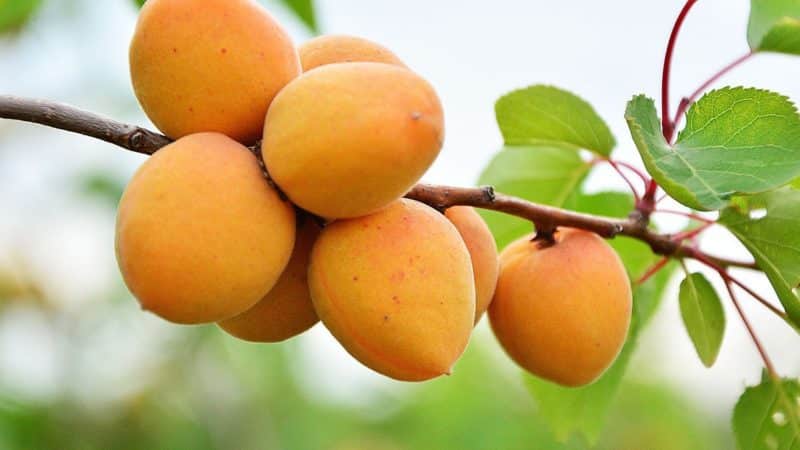
Saratov ruby
The tree is fast-growing, medium-sized, the crown is dense and spherical. The shoots are medium-sized, thin, brown-brown in color. Apricot is frost-resistant, can withstand temperatures down to -40°C. The fruits are large, weighing about 40 g per one, yellow-orange in color. The skin is of medium density with slight pubescence and is difficult to separate from the pulp. The pulp is orange, the taste is dessert, sweet with sourness. The juice of the Saratov ruby is colorless. The harvest is characterized by keeping quality and transportability. Apricots are grown for personal consumption and sale.
Countess
A universal variety for growing in the Central region of Russia. The tree is fast growing, the crown is of medium density, the shoots are straight and thick. The Countess enters the fruiting period in the fourth year after planting. The variety is drought-resistant, seedlings quickly adapt to the climate. The fruits are small - weighing about 20 g, round in shape. The pulp is tender and juicy, the taste is harmonious, sweet and sour. The aroma is berry-fruity. The taste of the Countess is rated 5 points out of 5. Apricot rarely gets sick, is resistant to rot, and is unpretentious in care.
Orlovchanin
The plant is medium-sized with a raised crown. The shoots are dense, brown in color. Fruiting begins in the third year after planting. The weight of the apricot is about 30 g, the shape is round, the color of the peel is yellow-orange. The pulp is dense, sweet and sour, orange in color. There is slight pubescence. The stone is large and easily separated from the pulp.Oryol is partially self-fertile, which provides summer residents with stable yields and smooth ripening of fruits. Harvested by mid-August, used for transportation, processing, and personal use.
Late
The late apricot harvest is harvested in late August or early September. During cultivation, summer residents pay special attention to protecting trees from diseases and insects - they regularly carry out preventive measures (pruning, loosening, mulching) and apply foliar fertilizing (spray the plantings with a solution of Bordeaux mixture).
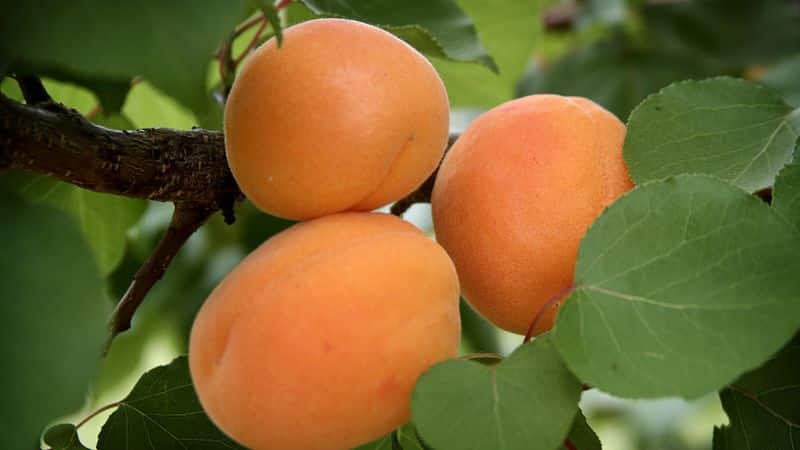
Monastic
Tree height - up to 5 m, crown of medium density, spherical shape. Fruiting begins in the third year. The shoots are straight, the leaves are smooth, ovate. The weight of the fruit is 20-25 g, the color is yellow with a pink tint, the pubescence is weak. The shape is oval, slightly compressed laterally. The pulp is juicy and mealy, the taste is sweet and sour. The variety is self-fertile - there is no need to pollinate it artificially. Monastyrsky ripens by the end of August. Universal application.
Favorite
Winter-hardy universal variety. The height of the tree is up to 3 m, the crown is medium spreading and dense. The leaves are large, dark green in color. The fruits are round in shape, yellow-red in color with an orange tint. Weight - 30 g, pubescence is weak. The pulp melts in the mouth and has a juicy and delicate sweet and sour taste. The stone is small and easily separated from the pulp. The first harvest is harvested 3-4 years after planting. The favorite is frost-resistant, distinguished by its transportability, keeping quality and attractive presentation.
Kompotny
The tree is medium-sized, the crown is compact. The fruits are yellow with a reddish blush, weight - about 40 g. The pulp is juicy and crisp, orange, the taste is sweet and sour. The stone is medium in size, without pubescence.When preparing compotes, the fruits do not fall apart and retain their shape - hence the name of the variety. Compote is resistant to freezing and is rarely damaged by insects. Apricot is recommended for cultivation in the Central Black Earth region; it quickly adapts to climatic conditions.
The most delicious and sweet varieties
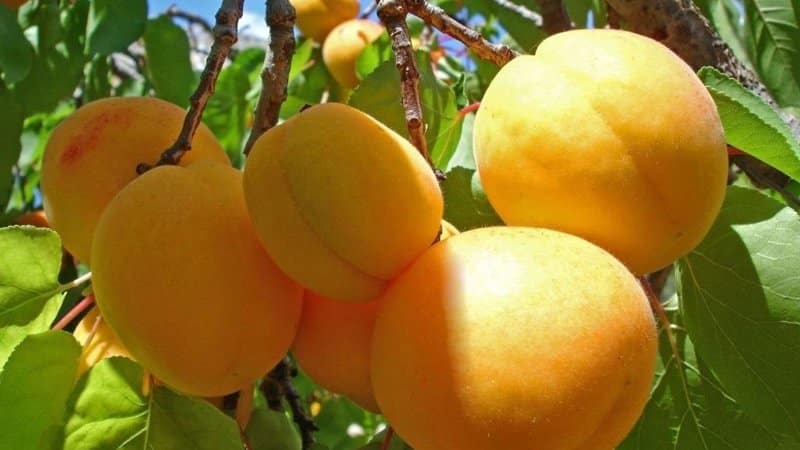
Taste qualities play a major role when choosing a variety. The most popular are apricots, which are distinguished by their sweet and pleasant pulp, delicate and harmonious taste.
Dessert
Early ripening self-fertile winter-hardy variety. The height of the tree is up to 5 m, the crown is spreading, the density is average. The weight of the fruit is 30-40 g, the color is bright yellow, attractive. The pulp is aromatic and tender, light yellow in color. The taste is harmonious, sweet, with a slight sourness. Dessert is suitable for transportation; the fruits are distinguished by keeping quality and transportability. Disadvantages: poor resistance to moniliosis and sensitivity to waterlogging.
Tsarsky
Early ripening variety. The trees are medium-sized, fast-growing, the shoots are straight and bare, of a brownish tint. The shape of the fruit is oval, weight - 20-25 g, some specimens reach 30-35 g. The pulp is juicy, sweet and sour, rich fruity aroma. The Tsarsky variety is frost-resistant and rarely affected by diseases. Apricots make delicious and juicy fruit salads, summer snacks, cocktails and compotes.
Alyosha
A universal early-ripening variety ideal for growing in central Russia. The tree is medium-sized with a spherical crown. The fruits are rounded and flattened, weighing up to 20 g, yellow-orange in color with speckles. The pulp is dense, the pubescence is weak. The taste is sweet and juicy, the aroma is moderate. The large stone is easily separated from the pulp. Fruiting is early - the first fruits ripen 3-4 years after planting.Alyosha is also famous for its decorative qualities - the tree looks beautiful on the site during flowering.
Attention! To ensure that apricots retain their taste and presentation longer, they are placed in the refrigerator. Unripe fruits with rough skin, without spots or cracks, are suitable for storage. They are placed in an airtight container with a lid; the use of plastic bags is not recommended. Apricots are also stored dried, dried and frozen.
Varieties with large fruits
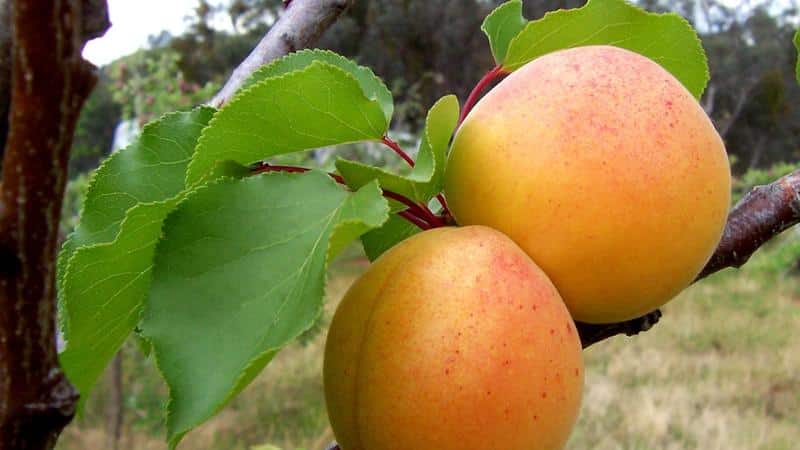
Large-fruited varieties guarantee high yields, so they are often grown for industrial purposes and for sale. In addition to weight, it is important to pay attention to the shape, color, flesh and skin of the apricots. The shelf life and transportability of the crop depend on these qualities.
Kunach
Mid-late variety for universal use. The crown is flat-rounded, the tree is medium-sized. The shoots are straight, the bark is smooth and gray. The weight of the fruit is about 35 g, but under favorable conditions it reaches 50 g. The shape is round, the stalk is short, apricots are easily separated from the branches. The skin is tender with medium pubescence. The pulp is orange, the juice is colorless, the taste is sweet and sour. The color of the fruit is yellow, there are faint subcutaneous dots. The seed is small and easily separated from the pulp. Kunach is winter-hardy, drought resistance is average. Apricot rarely gets sick.
Polessky large-fruited
The productive Polessky large-fruited variety bears fruit from the fourth year after planting. Seedlings quickly adapt to weather conditions and are resistant to frost. An adult plant is spreading with strong shoots. Fruit weight is from 50 to 80 g, round shape. The peel is dense, without pubescence, yellow in color with a red blush and small dots. The taste is harmonious and sweet, the flesh is grainy and juicy.Large-fruited Polesie is popular among amateur summer residents and farmers and is universal in use.
Veteran of Sevastopol
A medium-sized tree with a spreading crown. The variety is late-ripening, harvested in late August. The fruits are round-oval, the weight of one is from 60 to 85 g. The pulp is golden, sweet and juicy. The fruits are orange with a pink blush on the side. Veteran of Sevastopol bears fruit in the fourth year after planting. The fruits differ not only in size, but also in their attractive color and juicy pulp.
Interesting! Cheesecakes, cakes, pies, and puff pastries are prepared from juicy and sweet apricots. The pulp is indispensable for making jam, marshmallows, marmalade, and confiture. Apricot harmoniously combines with the taste of other fruits and berries.
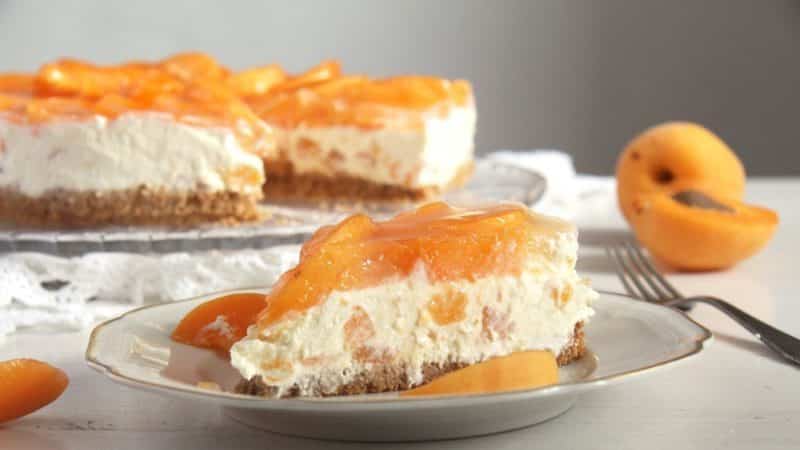
Conclusion
Summer residents who love early-ripening apricot varieties choose Firstborn of Samara or Iceberg for planting. The trees rarely get sick and begin to bear fruit early; the harvest is harvested in July. Dessert, Tsarsky or Alyosha apricots are grown for fresh consumption and cooking. They have juicy and aromatic fruits, sweet and sour pulp, pleasant to the taste.
For industrial purposes and trade, the varieties Veteran of Sevastopol, Kunach, Polessky large-fruited are planted. Their fruit weight is from 30 to 80 g. Apricot varieties for Central Russia must be frost-resistant, with strong immunity.